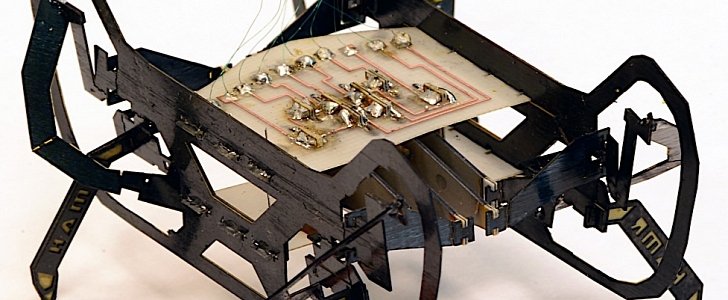Due to the way they are constructed, airplane engines are notoriously difficult to diagnose and repair by humans. The process is at the same time a very lengthy one.
During this week’s Farnborough International Airshow, Rolls-Royce’s technology specialist James Kell released the first info on a technology that might help the company significantly reduce the time needed to locate a problem and fix it.
The solution is, according to CNBC, a series of tiny robots currently being developed by Rolls-Royce together with the Harvard University and the University of Nottingham.
The people working on the project say they took inspiration from the dreadful cockroach, a creature capable of crawling in the tiniest of places. Making a robotic cockroach, however, is proving to be a daunting challenge, as research on the machines started some eight years ago at Harvard.
Called Harvard’s Ambulatory MicroRobot (HAMR), the robot’s size is not to exceed 15 mm (0.6 inches), and it is supposed to be able to carry a camera on top of it. Once ready, robots could be sent in the most secluded parts of an aircraft engine, for instance in the combustion chamber.
Work that usually takes up to five hours there could be reduced to as little as five minutes, said James Kell.
“They could go off scuttling around reaching all different parts of the combustion chamber,” Kell said according to the source.
“If we did it conventionally it would take us five hours; with these little robots, who knows, it might take five minutes.”
Cockroach robots are not the only miniaturized tools Rolls-Royce is working on. Snake-inspired machines, capable of flexing themselves in the tightest of spaces, are also under development, as is a robot meant to repair compressor blades.
The technology, exciting as it sounds, is nowhere near maturity. Aware of the task ahead, neither Rolls-Royce nor Harvard did not announce a timetable for the cockroach research.
The solution is, according to CNBC, a series of tiny robots currently being developed by Rolls-Royce together with the Harvard University and the University of Nottingham.
The people working on the project say they took inspiration from the dreadful cockroach, a creature capable of crawling in the tiniest of places. Making a robotic cockroach, however, is proving to be a daunting challenge, as research on the machines started some eight years ago at Harvard.
Called Harvard’s Ambulatory MicroRobot (HAMR), the robot’s size is not to exceed 15 mm (0.6 inches), and it is supposed to be able to carry a camera on top of it. Once ready, robots could be sent in the most secluded parts of an aircraft engine, for instance in the combustion chamber.
Work that usually takes up to five hours there could be reduced to as little as five minutes, said James Kell.
“They could go off scuttling around reaching all different parts of the combustion chamber,” Kell said according to the source.
“If we did it conventionally it would take us five hours; with these little robots, who knows, it might take five minutes.”
Cockroach robots are not the only miniaturized tools Rolls-Royce is working on. Snake-inspired machines, capable of flexing themselves in the tightest of spaces, are also under development, as is a robot meant to repair compressor blades.
The technology, exciting as it sounds, is nowhere near maturity. Aware of the task ahead, neither Rolls-Royce nor Harvard did not announce a timetable for the cockroach research.


